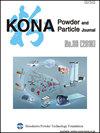Microbial Aerosols: Sources, Properties, Health Effects, Exposure Assessment—A Review
IF 3.2
4区 材料科学
Q3 ENGINEERING, CHEMICAL
引用次数: 38
Abstract
Microorganisms are ubiquitous in the environment. Wherever their sources are present, the particles can be released into the air forming microbiological aerosols. Although most of their particles cause no harm to the exposed individuals, some of their propagules may have infectious or allergenic potential and may carry toxic or irritant substances and components. Their inhalation usually poses a significant health risk and is responsible for numerous adverse outcomes, from allergic reactions, infections and toxic responses to various nonspecific symptoms. This review article provides fundamental background information on the role of microorganisms in the environment, defines and characterizes environmental sources of microbial aerosols, describes microbial abilities for airborne transport and comments on their role in atmospheric processes, discusses their physical and biological characteristics which result in adverse health outcomes observed in exposed individuals. The paper characterizes comprehensively numerous sampling and analysis techniques involved in the quantitative and qualitative evaluation of microbial aerosols together with their practical applications, presents strategies applied in the assessment of harmful microbial agents formed by bioaerosols, explains the ways of creating hygienic standards (understood here as reference/threshold limits) for microbiological aerosols conditioned by both medical and environmental determinants, and comments on their usefulness in the control and protection of environment and health.微生物气溶胶:来源,性质,健康影响,暴露评估综述
微生物在环境中无处不在。无论它们的来源在哪里,这些颗粒都会被释放到空气中,形成微生物气溶胶。虽然它们的大多数颗粒对暴露的个体不会造成伤害,但它们的一些繁殖体可能具有感染性或致敏性,并可能携带有毒或刺激性物质和成分。它们的吸入通常会造成重大的健康风险,并导致许多不良后果,从过敏反应、感染和毒性反应到各种非特异性症状。这篇综述文章提供了微生物在环境中作用的基本背景信息,定义和表征了微生物气溶胶的环境来源,描述了微生物在空气传播中的能力,并评论了它们在大气过程中的作用,讨论了它们的物理和生物特性,这些特性导致暴露于环境中的个体观察到的不良健康结果。本文全面介绍了微生物气雾剂定量和定性评价所涉及的众多采样和分析技术及其实际应用,介绍了评估由生物气雾剂形成的有害微生物剂所应用的战略,解释了为受医疗和环境决定因素制约的微生物气雾剂制定卫生标准(在这里理解为参考/阈值限制)的方法,并对其在控制和保护环境和健康方面的作用进行了评述。
本文章由计算机程序翻译,如有差异,请以英文原文为准。
求助全文
约1分钟内获得全文
求助全文
来源期刊

KONA Powder and Particle Journal
工程技术-材料科学:综合
CiteScore
8.40
自引率
4.90%
发文量
35
审稿时长
>12 weeks
期刊介绍:
KONA publishes papers in the broad field of powder science and technology, ranging from fundamental principles to practical applications. Papers describing technological experience and critical reviews of existing knowledge in special areas are also welcome.
 求助内容:
求助内容: 应助结果提醒方式:
应助结果提醒方式:


